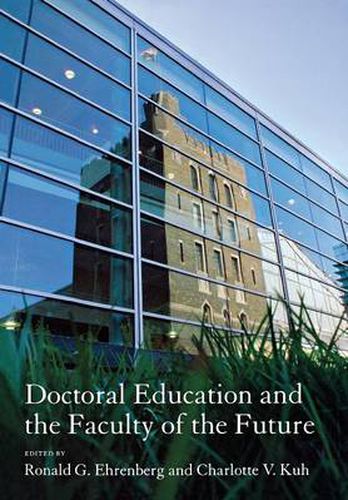Readings Newsletter
Become a Readings Member to make your shopping experience even easier.
Sign in or sign up for free!
You’re not far away from qualifying for FREE standard shipping within Australia
You’ve qualified for FREE standard shipping within Australia
The cart is loading…






American colleges and universities simultaneously face large numbers of faculty retirements and expanding enrollments. Budget constraints have led colleges and universities to substitute part-time and full-time non-tenure-track faculty for tenure-track faculty, and the demand for faculty members will likely be high in the decade ahead.
This heightened demand is coming at a time when the share of American college graduates who go on for PhD study is far below its historic high. The declining interest of American students in doctoral programs is due to many factors, including long completion times, low completion rates, the high cost of doctoral education, and the decline in the share of faculty positions that are tenured or on the tenure track. In short, doctoral education is in crisis because the impediments are many and the rewards are few; students often choose instead to enroll in professional programs that result in more marketable credentials.
In Doctoral Education and the Faculty of the Future, scientists, social scientists, academic administrators, and policymakers describe their efforts to increase and improve the supply of future faculty. They cover topics ranging from increasing undergraduate interest in doctoral study to improving the doctoral experience and the participation of underrepresented groups in doctoral education.
$9.00 standard shipping within Australia
FREE standard shipping within Australia for orders over $100.00
Express & International shipping calculated at checkout
American colleges and universities simultaneously face large numbers of faculty retirements and expanding enrollments. Budget constraints have led colleges and universities to substitute part-time and full-time non-tenure-track faculty for tenure-track faculty, and the demand for faculty members will likely be high in the decade ahead.
This heightened demand is coming at a time when the share of American college graduates who go on for PhD study is far below its historic high. The declining interest of American students in doctoral programs is due to many factors, including long completion times, low completion rates, the high cost of doctoral education, and the decline in the share of faculty positions that are tenured or on the tenure track. In short, doctoral education is in crisis because the impediments are many and the rewards are few; students often choose instead to enroll in professional programs that result in more marketable credentials.
In Doctoral Education and the Faculty of the Future, scientists, social scientists, academic administrators, and policymakers describe their efforts to increase and improve the supply of future faculty. They cover topics ranging from increasing undergraduate interest in doctoral study to improving the doctoral experience and the participation of underrepresented groups in doctoral education.